Wasp Control Methods: How To Get Rid of Wasps
One simple, two-ingredient solution works brilliantly to get rid of wasps.
While we must cohabitate with nature to a certain degree, dealing with a colony of wasps in or near your home is one of those scenarios where you’ve got to draw a hard line. More than that, the issue needs to be treated swiftly because the longer they linger, the greater their numbers become.
“Wasps pose significant dangers, as even a single wasp or a large group can inflict harm or even be fatal to sensitive individuals and pets,” says Ray Hess, pest control expert and regional technical training manager at Arrow Exterminators. “Unlike honey bees, their stingers are not barbed, enabling them to sting repeatedly.”
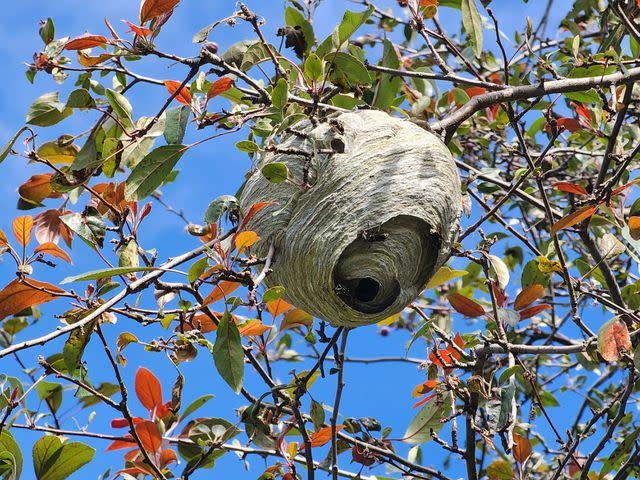
NurPhoto/Getty Images
Ahead, we’re covering some of the common signs of infestation, sharing some DIY wasp control methods you can try on your own, and helping you figure out when it’s time to call in the pros for a thorough extermination.
Related: 16 Plants That Repel Bugs and Mosquitoes Naturally
Common Signs of Wasp Infestation
Unlike some insects or critters that tend to hide away—like honey bees or mice—wasps are one of those pests that almost always make themselves known. Since they’re visible, there shouldn’t be any problem you won’t know about. Look for these signs.
Wasps
The first sign of a wasp infestation is wasps themselves. Wasps look similar to bees, but have longer, skinnier bodies and no fuzz. If you see wasps flying in or around your home—or you spot one of their nests—that’s a sign of an infestation. These infestations start out small, sometimes with just a few wasps, but their colony grows quickly in just a matter of days or weeks.
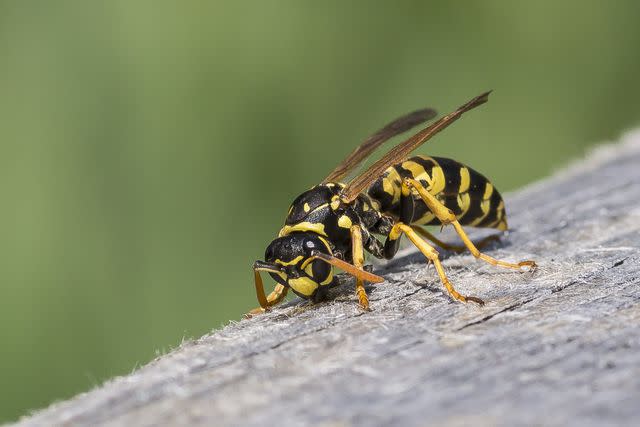
Klaus Schulmann / 500px / Getty Images
Wasp Nests
Another sign of infestation: Nests! Hess says you’ll usually find wasp nests under eaves or other surfaces. If the nest is located in a wall void, you may not see the nest. Instead, you’ll see the wasps flying in and out of the void entrance. “Sometimes wasps build their nests in concealed areas like bushes and trees,” Hess adds. “These nests can be challenging to notice or locate until you are trimming them, and they vigorously defend their territories.” Below are three common types of wasps nests to look out for.
Paper Wasp Nests: These are umbrella-like structures made from a paper-like material. Similar to bee colonies, they take on a comb-like appearance.
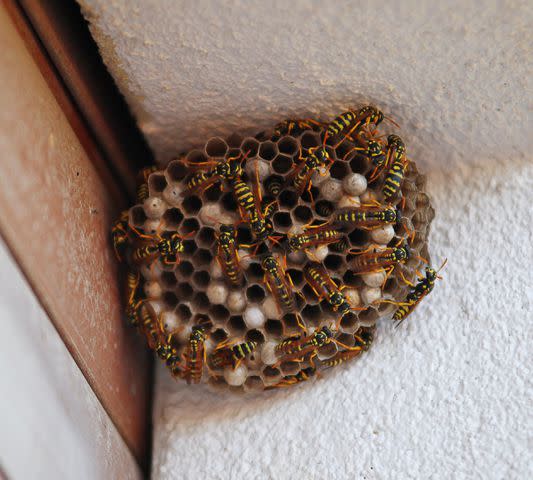
MATTHIASRABBIONE/Getty Images
Paper Wasp NestBald-Faced Hornet Nest: Bald Faced hornets construct large, misshapen nests from a paper-like material. These are the stereotypical nests you might think of when someone says “hornet nest.” Some people describe them as a football shape.
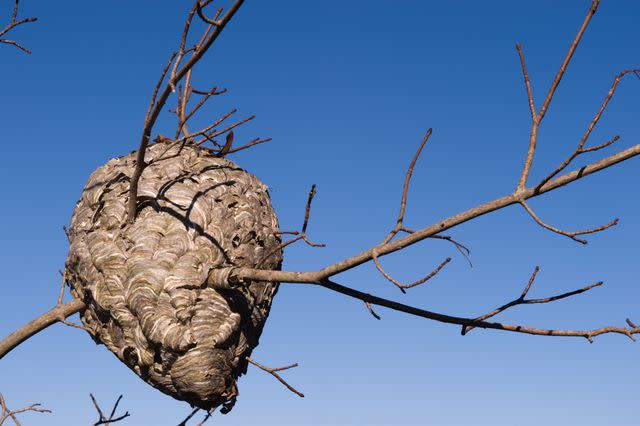
Rainbowphoto/Getty Images
Bald-Faced Hornet NestMud Dauber Nest: True to their name, mud dauber wasps construct their home out of mud. Their nests resemble compact, cylindrical mud tubes attached to the wall and sometimes ceiling. These nests are much smaller than the other types and tend to blend in with their surroundings.
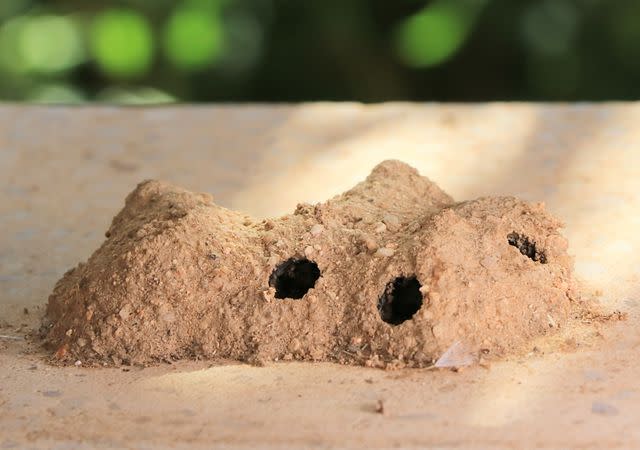
Désirée Russeau/Getty Images
Mud Dauber NestDIY Wasp Control Methods
If you’re dealing with a small infestation, you don’t necessarily need to call in a professional to help with the extermination. Instead, try one of these solutions first. Whatever method you use, Hess advises doing the removal in the evening when wasps aren’t as active. He adds, “During an attack, wasps target movement, so spraying and running are generally not advisable. A slow, deliberate retreat is preferable.”
Soapy Water
Ben McAvoy, co-founder of Insectek Pest Solutions, says that “the easiest way to remove a wasp nest is to spray it with soapy water from a distance.” Combine 10 ounces of water with two ounces of dish soap and mix well. This mixture suffocates the wasps by clogging the pores they breathe through and quickly kills them. If the nest is out of reach, McAvoy says to knock it down with a broom and then to spray the solution. Only do this if it’s a small nest and the wasps aren’t aggressive.
Aerosol Wasp Spray
A store-bought aerosol spray that’s intended to kill wasps or hornets is another option. Since these have a longer range—typically exceeding 10 feet—they allow you to keep better distance from the wasp nest which can minimize potential for injury.
When To Hire a Professional Wasp Control Service
If you’re dealing with aggressive wasps, large colonies and nests, or tricky nest locations then you should hire a professional. Also hire out this task if anyone in your home has a wasp allergy, or if you’ve struggled to get control of the issue for more than a day or two.
“You especially should call a professional when wasps build their nests inside your home,” advises Meg Pearson, pest control expert and training manager at Critter Control. “If nests are built inside the walls, in your attic, or inside your roof, they need to be professionally removed.”
How to Prevent Future Wasp Infestations
Preventing wasps from nesting can be tricky, but there are steps you can take to avoid future infestations.
Destroy the Old Nest
Make sure to destroy the nest to prevent pupae (the last stage before adulthood) from emerging and restarting your wasp issue. Pearson adds that “abandoned nests can also attract pests like raccoons, rats, roaches and other stinging insects.”
Related: How to Keep Animals Out of Your Garden Without Losing Your Mind
Routine Inspections
You and/or a professional should conduct routine inspections beginning in early spring to ensure any existing nests don’t become established.
Preventative Residual Treatment
At the same time as your inspection, apply a preventative residual treatment that deters wasps. “Applying a liquid residual-type product under the eaves in early spring can assist by eliminating newly emerging queens and preventing them from establishing new nests,” Hess says.
Seal Holes and Gaps
Take a look around your property and seal or screen any holes or gaps that wasps can use to enter voids, including attics, crawl spaces, and walls.
Related: 6 Common Houseplant Pests—and How to Destroy Them
For more Real Simple news, make sure to sign up for our newsletter!
Read the original article on Real Simple.

